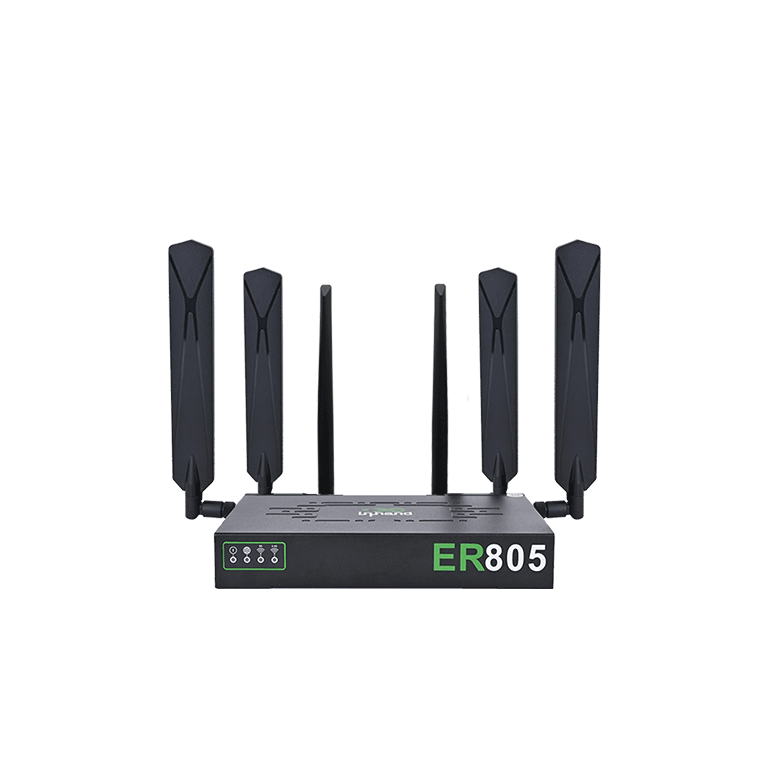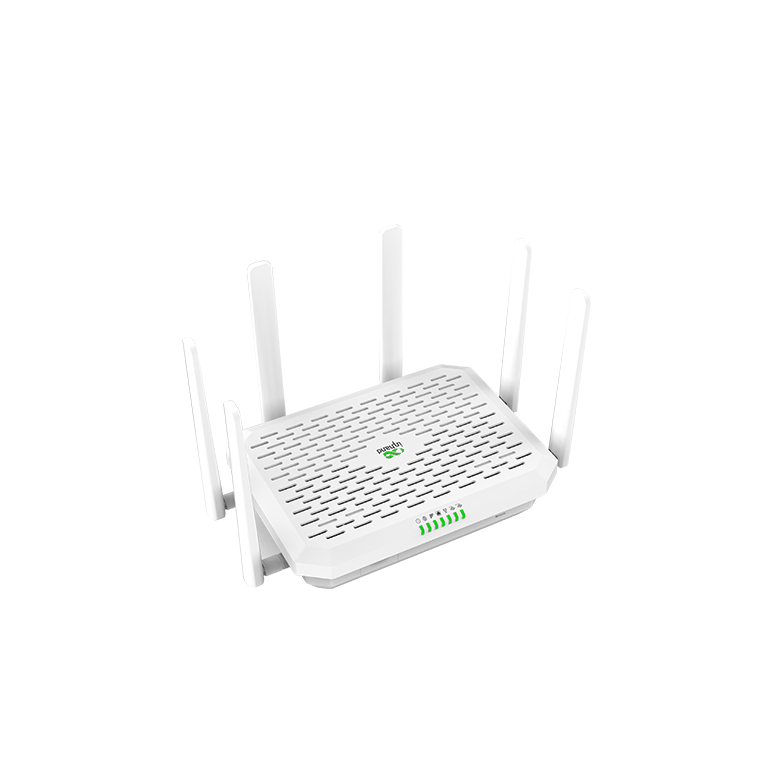
Dans le paysage commercial actuel, la demande de performances réseau rapides et fiables est plus critique que jamais. Comme les entreprises s'appuient sur un large éventail de services basés sur l'internet, du stockage en nuage à la VoIP (voix sur IP) pour la communication, il devient essentiel de s'assurer que les applications critiques fonctionnent de manière optimale. Une solution efficace est la mise en œuvre de la mise en forme du trafic - une technique conçue pour contrôler le flux de données, gérer l'utilisation de la bande passante et donner la priorité au trafic pour les applications critiques de l'entreprise.
Qu'est-ce que la mise en forme du trafic ?
La mise en forme du trafic, également connue sous le nom de mise en forme des paquets, est une technique de gestion de réseau utilisée pour réguler et optimiser la transmission des données en contrôlant le flux de trafic entrant ou sortant d'un réseau. Pour ce faire, on attribue des priorités aux différents types de paquets de données et on ajuste leur vitesse de transmission en fonction des besoins de l'entreprise.
En utilisant la mise en forme du trafic, les entreprises peuvent :
- Prévenir la congestion du réseau.
- Veillez à ce que les applications essentielles telles que la VoIP et la vidéoconférence bénéficient de la largeur de bande nécessaire.
- Gérer efficacement l'utilisation des données pour éviter la surconsommation des ressources limitées de la bande passante.
Limitation des vitesses de chargement et de téléchargement des sources WAN pour le contrôle de l'utilisation des données cellulaires
Un avantage essentiel de la mise en forme du trafic est sa capacité à gérer et à contrôler l'utilisation des données cellulaires en limitant les vitesses de chargement et de téléchargement de la source WAN. Pour les entreprises qui utilisent des connexions cellulaires pour les réseaux distants ou les succursales, les plafonds de données et les frais de dépassement sont des préoccupations courantes. Les liens WAN cellulaires ont souvent des limites de données strictes, et l'utilisation incontrôlée de la bande passante peut rapidement conduire à des frais de dépassement coûteux ou à un étranglement.
La mise en forme du trafic permet aux entreprises de donner la priorité aux applications essentielles tout en limitant l'utilisation des données pour les activités moins critiques. Par exemple :
- Le trafic non essentiel, tel que les téléchargements de fichiers volumineux, la diffusion en continu ou la navigation non professionnelle, peut voir sa vitesse limitée afin de réduire la consommation de données cellulaires.
- Les services importants, tels que la VoIP, les communications en temps réel ou les applications professionnelles critiques comme les plateformes CRM, peuvent se voir garantir une largeur de bande, ce qui leur permet de fonctionner de manière optimale sans atteindre les limites de données.
En façonnant le trafic de cette manière, les entreprises peuvent éviter une utilisation excessive des données cellulaires, maintenir des performances réseau constantes pour les applications essentielles et éviter les frais de dépassement inattendus, ce qui se traduit par une utilisation plus efficace et plus rentable des plans de données cellulaires.
Réservation de bande passante pour les applications à bande passante minimale
Certaines applications, en particulier celles qui reposent sur la communication en temps réel, ont des exigences minimales en matière de largeur de bande pour fonctionner correctement. La VoIP en est un excellent exemple, car elle nécessite une connexion stable et ininterrompue avec une faible latence. Toute interruption peut entraîner une mauvaise qualité d'appel, avec pour conséquence des appels interrompus ou un son brouillé, ce qui peut nuire à la productivité de l'entreprise et aux relations avec les clients.
Grâce à la mise en forme du trafic, les entreprises peuvent réserver une bande passante minimale garantie à ces applications. Ce processus est connu sous le nom de qualité de service (QoS), où des applications ou des types de trafic spécifiques sont prioritaires, et une partie de la bande passante disponible est réservée pour répondre à leurs besoins. Par exemple :
- Les services VoIP peuvent bénéficier de la priorité la plus élevée, ce qui garantit que même pendant les périodes de pointe, la bande passante est suffisante pour maintenir des appels clairs et ininterrompus.
- D'autres applications sensibles à la largeur de bande, comme la vidéoconférence, les bureaux virtuels ou les services en nuage, peuvent également être réservées pour un fonctionnement ininterrompu.
Cela garantit que les opérations commerciales critiques qui reposent sur des données en temps réel sont protégées contre la dégradation des performances, même si le réseau est encombré.
Cas d'utilisation de la mise en forme du trafic dans les réseaux d'entreprise

Pour les entreprises disposant de succursales ou de sites distants, la mise en forme du trafic joue un rôle essentiel dans l'optimisation des performances de leur réseau. Voici quelques cas d'utilisation :
- Optimisation des bureaux à distance - Les bureaux distants s'appuient souvent sur des liaisons WAN pour se connecter au réseau de l'entreprise. La mise en forme du trafic garantit que le partage de fichiers, les applications en nuage et les appels VoIP sont prioritaires par rapport au trafic moins critique, ce qui réduit la latence et améliore l'expérience de l'utilisateur.
- Assurance qualité des appels VoIP - Les services VoIP remplacent de plus en plus les lignes téléphoniques traditionnelles pour de nombreuses entreprises. Pour garantir des appels cohérents et de haute qualité, il faut donner la priorité aux paquets vocaux grâce à la mise en forme du trafic, en réduisant la gigue, la perte de paquets et la latence.
- Priorité aux applications pour les opérations critiques - Les entreprises peuvent s'appuyer sur diverses applications pour leurs activités quotidiennes. La mise en forme du trafic garantit que les applications essentielles telles que les systèmes ERP ou CRM ne sont pas compromises en raison d'activités nécessitant une grande largeur de bande, telles que la diffusion de vidéos ou l'utilisation des médias sociaux.
- Économies sur la bande passante - En contrôlant l'utilisation de la bande passante et en limitant la consommation de données inutiles, les entreprises peuvent éviter les coûts excessifs liés aux surcharges de données et optimiser l'utilisation de leurs liaisons WAN. Dans les cas où le fournisseur d'accès à l'internet (FAI) facture la consommation de la bande passante, la mise en forme du trafic offre un moyen stratégique de contrôler les dépenses.
- Continuité du réseau des succursales - La mise en forme du trafic peut aider à maintenir des opérations fluides dans plusieurs succursales en garantissant que les services critiques sont disponibles à tout moment, même pendant les périodes de forte demande.
Conclusion
Dans un monde professionnel de plus en plus connecté, la gestion de la bande passante et le contrôle de l'utilisation des données sont essentiels pour optimiser les performances du réseau et éviter des frais de dépassement coûteux, en particulier pour les entreprises qui dépendent de connexions WAN cellulaires. La mise en forme du trafic permet aux entreprises de donner la priorité aux applications critiques, de limiter l'utilisation des données non essentielles et de garantir un fonctionnement fiable dans toutes les succursales et sur tous les sites distants. En contrôlant stratégiquement les vitesses de chargement et de téléchargement, les entreprises peuvent maximiser leurs plans de données cellulaires et éviter les perturbations causées par une consommation excessive de la bande passante.
InHand Networks offre une solution robuste à ces défis avec nos routeurs 5G, tels que le FWA02 et l'ER805. Ces routeurs sont équipés de fonctionnalités de mise en forme du trafic, permettant aux entreprises de gérer avec précision l'utilisation des données et de donner la priorité aux applications essentielles. Qu'il s'agisse de réserver de la bande passante pour la VoIP ou de contrôler les données pour éviter les surcharges, les routeurs 5G d'InHand Networks offrent la flexibilité et la fiabilité nécessaires aux réseaux d'entreprise modernes.

